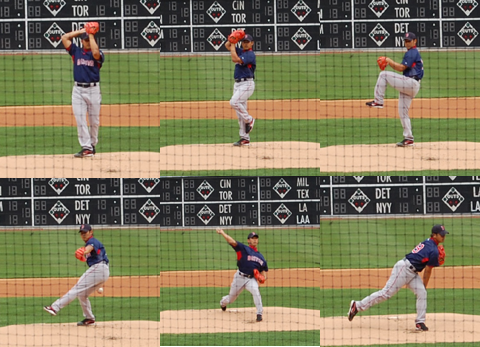I know I usually don’t talk about baseball video games, but I can’t hold back my rage any longer.
The other day I picked up a copy of MLB 08: The Show for Playstation 3. For those of you unfamiliar with this game, the standout feature is you can create a player and take him all the way up from the minors to the majors, while increasing his skills along the way. It’s a fun idea since you only control your created player instead of the usual baseball sim where you control everyone.
Overall, “The Show” feature is executed pretty well, yet the main problem is the annoyance factor of the actual baseball game. Sure the graphics are great, but there are a number of glaring problems.
First off, the fielders are idiots. Nothing is more annoying than seeing the shortstop field an easy grounder, leisurely take his time throwing to first, and watch the base runner be safe by half a step. If the fielder had even an inkling of urgency, the runner would have been out by a mile. Instances like this happen all the time in all sorts of situations.
The other problem with fielders is that there is no collision detection. My player can run through any other fielder like he’s not even there, making for a very unpolished game experience.
The strike zone is a problem too. The designers thought it would be fun to have incredibly inconsistent umpires. If a ball is thrown to the edge of the strike zone, it might sometimes be a strike, or sometimes a ball. While this may emulate real life in some ways, (let’s leave that discussion for another time) it makes my head hurt when a ball is so blatantly a strike and it gets called a ball. I think we call all agree that typically umpires do not try and make the strike zone size random. The game designers did.
I also feel that pitching in general is a bit unrealistic. I never get a sense that I’m expanding the strike zone when I get ahead in the count. Batters seem to keep the same strike zone regardless of the count. There’s also way too many foul balls. In baseball there are about .6 foul balls hit per batter faced. Rarely is there an at-bat in the game where I don’t have at least one foul ball.
I could go on with my gripes about the actual game, but my biggest problem of all is that it’s not nearly as good as EA Sports’ MVP Baseball 2005, which in my opinion is the greatest baseball video game of all time. That game was made 3 years ago and since EA lost their rights to create an MLB licensed product, baseball video games have taken a huge step backwards.
MVP 2005 had extremely responsive fielding controls, a great pitching system, a simple batting system and it really felt like you were in control of all 9 players on the field. For all the pretty graphics the new games have, you never really feel like you’re in control of the players and that is where they ultimately fail.
I just wonder how many more years I’ll have to wait before a baseball sim as good as MVP 2005 comes along again.


 I was browsing a used bookstore this past weekend and stumbled upon a graphic novel by James Sturm titled: The Golem’s Mighty Swing. I’ve been on a graphic novel kick lately and I couldn’t believe my luck in finding one that was actually about baseball.
I was browsing a used bookstore this past weekend and stumbled upon a graphic novel by James Sturm titled: The Golem’s Mighty Swing. I’ve been on a graphic novel kick lately and I couldn’t believe my luck in finding one that was actually about baseball. 